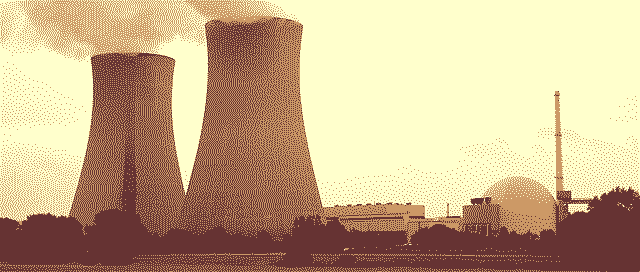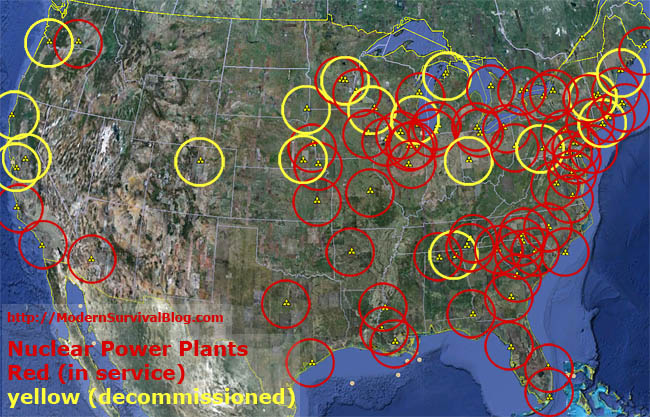|

September 15, 2011
from
Modernsurvivalblog Website

An
EMP (electro magnetic pulse), if big
enough, will fry electronics, microelectronics, and will blow up
transformers along the electrical power grid.
Although a large nuclear blast high in
the atmosphere will cause a wide ranging EMP affect, the most likely
scenario of EMP devastation will come from our Sun. A monstrous
solar flare. It certainly will happen, there is no doubt about that
- even among scientists and government organizations.
But… when…
The scenario
First, high energy sunlight - mostly x-rays will ‘ionize’ (convert
into ions, atoms or molecules with a net electric charge) Earth’s
upper atmosphere, which will interfere with radio communications.
Next comes a radiation storm, potentially dangerous to unprotected
astronauts.
Finally comes the real killer, a coronal mass ejection (CME), a
slower moving cloud of charged particles that can take several days
to reach the Earth. When a CME hits, the solar particles will
interact with Earth’s magnetic field to produce powerful
electromagnetic fluctuations.
It is these fluctuations that will
produce electrical currents in ‘conductive’ things here on Earth,
such as our criss-crossing power lines suspended above our streets.
As you may have witnessed during a
powerful lightning strike, transformers will explode and burn up as
these currents overload their design capacity.
The result
Power across the land will be mostly gone. Satellites will be fried
- no GPS, or communications.
No cell phones. No working pumps for
utilities or gasoline. No ATM’s. No modern day transactions or
commerce. Distribution channels are closed. Transportation grinds to
a halt. The clock is ticking towards chaos…
The power companies do have spare transformers. However, all reports
indicate there are only fractional numbers available, and most
studies indicate that it could take up to many years to resolve.
By then of course, it will be a
different world.
Nuclear
Meltdown
While civilization will rapidly deteriorate into chaos, the worst of
it is just beginning to boil over. That is, the worlds 440 nuclear
power plants (about 700 if you count all research reactors).
Nuclear reactors while running normally, are in a state of
controlled meltdown as they heat water into steam which turns
turbines that produce electricity. The only thing saving us from
disaster is the constant supply of fresh cool water that keep the
rods from melting down. The flow of water requires electricity and
pumps, and working electronic systems to control them.
If these systems are damaged, or the
electricity is OFF, well,
remember Fukushima???
Backup batteries will keep pumps running for a day or so. Diesel
generators will keep pumps running as long as their is diesel fuel
and spare parts on hand. The problem is, in our scenario the diesel
fuel will run out (assuming that the generator works in the first
place).
Distribution will be down. Where will
the fuel come from? Surely there will be some reactors saved, but
common sense tells us that there will remain a very large number of
nuclear plants that will suffer full-on meltdown. Imagine a hundred
or more Fukushima’s - all at once.
There will hardly be a safe place on the planet should this occur.
Soils will be permeated with radioactive particles, which when
farmed will produce vegetables that glow in the dark - assuming that
the Farmers are still alive. Top soils will need to be scraped off
to access cleaner soils. Of course it will be much worse downwind
from any nuclear plant.
Unless you can survive underground for
an extended period of time, living top side will be a life
challenge, to say the least.
If you
don’t think it can happen
There will always be skeptics. Skepticism is a very good thing.
However, do your own research and check
on the
1859 Carrington Event. That solar event, had it occurred in
modern time (and it will), it would have certainly produced results
similar to the scenario above. These major solar events reportedly
occur every 150 years or so.
And, they can happen at any time, even
during ‘off-peak’ of a solar cycle.
In conclusion
The purpose of this article is NOT to fear monger, but to highlight
your risk awareness of this eventual certainty.
It may very well happen in your
lifetime. Most people don’t think about these types of dangers or
risks. I happen to think about them from time to time - must just be
the way my brain is wired)
It is a good life insurance policy to
factor risks into your life situation. A proportional amount of
preparedness for various disaster scenarios is a very wise thing. In
my opinion.
You may also be interested in 'USA - Safe Distance from Nuclear
Power Plants':

It is difficult
to impossible to answer the question, “How far away
is a safe distance from a nuclear reactor?”, so I’ve
created 100 mile radius zones (200 mile diameter)
around each nuclear plant to provide some visual
perspective.
Yellow zones are around decommissioned
plants.
|


